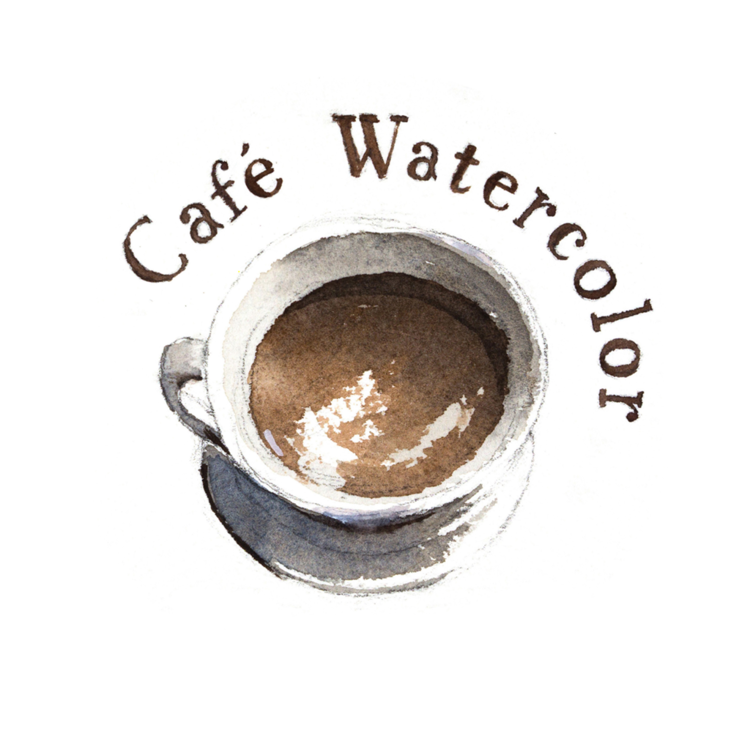CLICK HERE to watch my latest YouTube video.
The brush is the only thing between you and the paper. While the result of your painting mainly depends on you and your artistic core, good brush strokes make your painting fun to look at. It also gives your painting the character that’s uniquely yours. If you’ve been following my channel for a while. You probably heard me say don’t keep repeating your brush strokes. Repetitive brush strokes mean you are going autopilot without thinking, and painting without much thought behind it doesn’t look good. Of course, there are always happy accidents, but that’s just what they are, “accident”, you can’t always count on them. So learn what marks can your brushes make, when to use them, where to use them, are very, very important. If visual language is the ability to interpret and simplify what you see, then your brush strokes are the vocabularies for your visual language. Here are the four things you need to learn how to master in order to have a good variety of brush strokes.
Check the wetness - While this is not directly related to the brush stroke. It does affect how it’s going to look. If your brush is too wet, the mark you made will dry too light or worse, it might start dripping if you paint tilted. You also won’t be able to do dry brushing if your brush is too wet. On the other hand, if your brush is too dry, you might not able to make the mark you want also because the dry brush doesn’t go that far. So if you want to make a longer brushstroke, you do want some moisture in your mixture.
Pressure - How much you press your brush against the paper will dictate the size and look of your brush stroke. If you press down harder, it’s going to create a bigger mark, if you only touch it lightly with the tip of your brush, you’ll get a thin mark. This sounds elementary but I’ve seen quite a few students’ painting with the same brushstroke over and over again. Now, you can make different sizes of brush strokes by using different sizes of brushes. But you can get a lot of varieties out of a single brush. So always think about the shape you are going to paint before you switch brush around, and make the most out of the brush you have.
Speed and Direction - In general, if you paint a mark at a faster speed, your viewer will look at it faster and sense more dynamic. If you paint a mark at a slower speed, your viewer will look at it a bit slower and more carefully. So think about what you are painting. Do you want the viewers to focus on it? Or do you want viewers to sense motion from it? These are all the things you should consider before you start to paint.
When your brushstroke has both speed and direction, it becomes a vehicle for your viewers’ eyes. It will lead them across the painting. Master watercolor artist Charles Reid once said, and I’ll paraphrase here. “Your brushstroke should have a starting point and a destination” This is especially important when you are painting a single shape with a single brush stroke. But even if you are doing a large area wash. The way you paint is still important since your brush can move the paint on the paper.How many brush strokes - This is one of the most important things to consider if you want a good looking loose painting. How do you achieve the look you are going for with the least amount of brushstroke. This really relates to your ability to use your visual language. The simpler and more straight forward you can make your painting look with few brush strokes, the easier it is for your viewers to get. Imagine you are reading a novel or watching a movie. The best ones are usually the ones that know how to present a story in an intriguing way. It gives you just enough details to get you excited but leave out enough for wanting more. Don’t over paint your paintings with needless brush works. Even if your brushwork is masterful, too much of anything is never good.
I hope that was helpful. The main point is to be creative with the way you use your brush. So make the most out of them. Ok, I’m going to do a painting of this photo. I think it’s important to see it in context. As I said, brushstrokes are like vocabularies to your visual language. So how to use them is very important. Definitely check out the full video for the bonus painting demo.
Charity Sale and Donation
In responding to the COVID-19 outbreak, I will be donating 100% of the profit from the artwork sale to globalgiving.org towards their Coronavirus Relief Fund. Let's work together and help the people in need. For more information, please visit globalgiving.org
